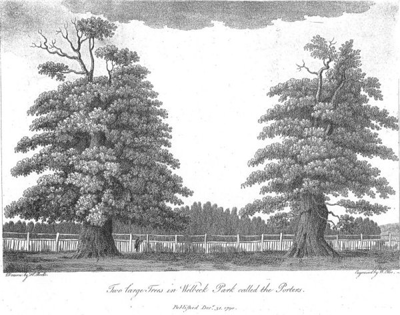Major Hayman Rooke – soldier, landscape historian, antiquarian, amateur archaeologist – is the fascinating subject of Emily Sloan’s new book. But who was he and how did Dr Sloan piece together his unusual life and work?
People are fascinating. I’m not sure whether there’s a recognised syndrome for biographers who begin to identify with their subjects, but Rooke was certainly a figure whom I increasingly warmed to the more I learnt about him. Putting together the various pieces of his life entailed collating materials from eleven different archives across the UK, squinting at florid handwriting, traipsing around soggy fields and trying to put together a jigsaw for which I had no box and no idea of the number of pieces.
I began with a collection of images; some 400 or so original sketches and watercolours made by Rooke between the 1760s and 1806, later bolstered by field notebooks and papers. This prompted questions about what exactly the images intended to show, where were they made, why were they made – and not least, who was Hayman Rooke? In order to try and understand what Rooke had tried to capture, and his reasons for doing so, I began reconstructing the personal, social, political and cultural milieu in which the sketches were made.

Source: Wikimedia
A reconstruction of Rooke’s diary, appended to the book, reveals Rooke to have been extraordinarily mobile, travelling often and widely, the length and breadth of England and Wales (and, less frequently, beyond), tapping into a broad network of friends, relatives, correspondents and learned societies. Uncovering these relationships was intriguing, revealing an affable gentleman with connections across the full range of the social spectrum, from barely literate local farmers, through his gentleman neighbours and ex-army colleagues, to the Earls and Dukes of major estates. He collaborated with both William Speechley, head gardener to the Duke of Portland, and the landscape gardener Humphry Repton, apparently able to move seamlessly between social worlds as a go-between. The most frustrating part of this social exploration was being unable to pin down Rooke’s relationships with members of the Darwin and Boothby families beyond circumstantial evidence!
This investigation of the context and motivation – and connections – behind the sketches in turn raised further questions about the role of the visual in knowledge making. Field work and evidence-based research disseminated through the circulation of images in correspondence networks and in print enabled comparisons to be drawn more readily and negated the need for interested parties to stomp around in their boots in the mud (unless, of course, researching a book).
Although a relatively neglected figure today, Rooke was remembered and appreciated well into the nineteenth century, having produced a significant body of work embracing landscape, ancient trees, natural history, meteorology, and ancient and Roman Britain. His archaeological excavation process is revealed to be meticulous in comparison to that of his peers, apparently predating the beginning of ‘proper’ archaeology by a couple of decades, and his attention to detail in all areas made him a reliable and frequently referenced observer. Clearly my long absorption in Rooke’s world has influenced my affection towards him, but I believe he deserves to be better known and appreciated!
This guest post is written by Emily Sloan. Emily Sloan gained her doctoral thesis from the University of Nottingham.

by Emily Sloan
Hardback, 9781783274192, £39 or $64.35



 Q&A with Seth Peabody: Exploring German Film History
Q&A with Seth Peabody: Exploring German Film History